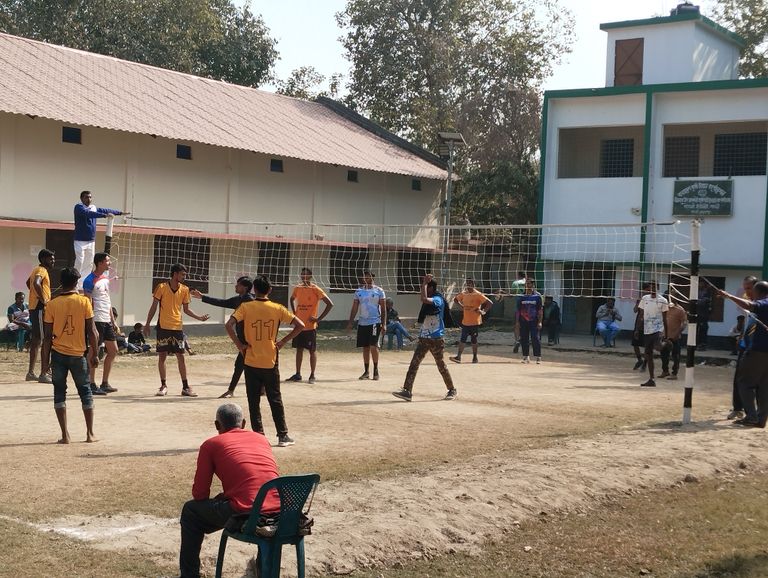
Volleyball A Thrilling Game of Skill and Teamwork.
Volleyball is one of the most exciting and dynamic sports played worldwide. It is a fast-paced game that requires agility, teamwork, and strategic planning. Played by millions, volleyball is not just a competitive sport but also a great way to stay fit and enjoy recreational activities. This blog explores the history, rules, techniques, and benefits of volleyball, along with tips for improving your game.
History of Volleyball
Volleyball was invented in 1895 by William G. Morgan, a physical education instructor in the United States. Originally called "mintonette," the game was designed as a less intense alternative to basketball. Over time, the rules evolved, and the sport gained popularity across the world. By 1964, volleyball became an official Olympic sport, and today, it is played in various formats, including indoor, beach, and sitting volleyball for differently-abled athletes.
Basic Rules of Volleyball
Volleyball is played between two teams, each consisting of six players. The objective is to send the ball over the net and land it in the opponent’s court while preventing the opposing team from doing the same. Here are some key rules of the game:
- Scoring System – Matches are played in a best-of-five format. The first four sets go up to 25 points, while the final set is played up to 15 points. A team must win a set with a two-point advantage.
- Serving – The game starts with a serve. The server must hit the ball from behind the end line into the opponent’s court.
- Rotations – Players rotate positions each time they win a serve from the opponent.
- Hits Per Side – Each team is allowed a maximum of three touches before returning the ball. A player cannot hit the ball twice in succession.
- Fouls – Common fouls include touching the net, crossing the centerline, and making an illegal hit (such as carrying the ball).
Key Skills and Techniques in Volleyball
To excel in volleyball, players must master several fundamental techniques:
- Serving
A good serve can give a team an early advantage. There are different types of serves:
Underhand Serve – A beginner-friendly serve where the player strikes the ball from below waist level.
Overhand Serve – A more powerful serve performed with a toss and strike above the head.
Jump Serve – A high-impact serve that requires jumping and hitting the ball forcefully.
- Passing (Bumping)
Passing is crucial for setting up attacks. A bump pass is done using the forearms to direct the ball accurately to the setter.
- Setting
The setter is a key player who positions the ball for an attacker to spike. This technique involves a soft touch using fingertips to push the ball into an optimal position.
- Spiking (Attacking)
Spiking is an aggressive move where a player jumps and forcefully hits the ball into the opponent’s court. A well-executed spike can be difficult to defend against.
- Blocking
A defensive move where front-row players jump and extend their hands over the net to stop an opponent’s spike. Effective blocking can significantly disrupt an opponent’s attack.
- Digging
A defensive technique used to prevent the ball from touching the ground after a powerful spike. Players use their forearms or dive to save the ball.
Types of Volleyball
Volleyball has different variations, each with unique rules and playing styles:
- Indoor Volleyball – Played with six players per team on a hard court.
- Beach Volleyball – Played on sand with teams of two players.
- Sitting Volleyball – Designed for players with disabilities, played on a smaller court with a lower net.
- Sepak Takraw – A version popular in Southeast Asia, played with a rattan ball and a mix of volleyball and soccer techniques.
Health Benefits of Playing Volleyball
Volleyball is not just an entertaining sport but also a great way to improve physical and mental health. Some benefits include:
Cardiovascular Fitness – The fast pace of the game keeps the heart healthy.
Muscle Strength – Regular play strengthens the legs, arms, and core muscles.
Improved Coordination – The game enhances reflexes, agility, and hand-eye coordination.
Mental Toughness – Volleyball requires strategic thinking and teamwork, improving decision-making and communication skills.
Social Interaction – Being a team sport, volleyball helps build friendships and teamwork skills.
Tips to Improve Your Volleyball Game
If you want to become a better volleyball player, consider these tips:
- Practice Serving – A strong serve can give you a competitive edge. Practice different types of serves.
- Enhance Your Footwork – Quick movements and agility are essential in volleyball. Work on your speed and reaction time.
- Improve Your Jumping Ability – Spiking and blocking require strong jumps. Incorporate jump training exercises into your routine.
- Focus on Communication – Good teamwork and coordination are vital. Always communicate with your teammates.
- Watch Professional Games – Observing top players can help you learn advanced techniques and strategies.
Famous Volleyball Players and Teams
Several players and teams have left a lasting impact on volleyball:
Karch Kiraly (USA) – One of the greatest volleyball players, known for his success in both indoor and beach volleyball.
Giba (Brazil) – A legendary Brazilian player famous for his incredible attacking skills.
Zhu Ting (China) – A dominant female player with exceptional spiking abilities.
Brazilian Men’s and Women’s Teams – Consistently among the top teams in international volleyball tournaments.
Volleyball is a thrilling and dynamic sport that combines skill, strategy, and teamwork. Whether you play competitively or just for fun, the game offers numerous health benefits and opportunities for social interaction. With consistent practice and dedication, anyone can enjoy and excel in volleyball. So, grab a ball, find a team, and start playing this exciting sport.

Duties of a Volleyball Referee
Volleyball is a dynamic and fast-paced sport that requires fair and accurate officiating to maintain the integrity of the game. The referee plays a crucial role in ensuring that the game runs smoothly, following all rules and regulations. In this blog, we will explore the key responsibilities of a volleyball referee, their authority on the court, and the essential skills required to officiate effectively.
- Primary Responsibilities of a Volleyball Referee
A volleyball match typically involves a team of referees, including the first referee (head referee), second referee (assistant referee), line judges, and scorers. Each has specific duties, but the first referee holds the highest authority.
a) Enforcing the Rules
The primary duty of the referee is to ensure that the game is played according to the official rules set by governing bodies like the Fédération Internationale de Volleyball (FIVB) or national federations. They must have a thorough understanding of the rules and apply them consistently.
b) Controlling the Match
The referee is responsible for maintaining order on the court. They oversee player behavior, ensure fair play, and address any disputes that arise during the game. Their judgment is final in case of disagreements.
c) Making Crucial Decisions
Referees must make split-second decisions regarding points, faults, and violations. Their calls can influence the outcome of the game, so they must remain unbiased and focused.
d) Signaling and Communication
Referees use a standardized set of hand signals to communicate their decisions to players, coaches, and spectators. Clear and confident signaling is essential for smooth gameplay.
e) Conducting Pre-Match and Post-Match Duties
Before the match, referees inspect the court, equipment, and player uniforms to ensure compliance with regulations. After the match, they report any significant incidents, score discrepancies, or disciplinary actions.
- Specific Duties of Different Referees in Volleyball
a) First Referee (Head Referee)
Stands on an elevated platform to oversee the game.
Has the final authority on all decisions.
Calls fouls, violations, and awards points.
Controls player conduct and game interruptions.
b) Second Referee (Assistant Referee)
Positioned at the opposite side of the court, near the scorer’s table.
Assists the first referee by monitoring net violations, substitutions, and timeouts.
Communicates with team coaches regarding player changes.
Helps in managing disputes or protests.
c) Line Judges
Typically, two or four line judges monitor boundary lines.
They signal whether a ball is in or out of bounds.
They assist in identifying foot faults and service errors.
d) Scorers and Assistant Scorers
Maintain the official score of the game.
Keep track of rotations, substitutions, and timeouts.
Assist referees in verifying scores and resolving discrepancies.
- Key Skills Required for a Volleyball Referee
a) In-Depth Knowledge of the Rules
A referee must thoroughly understand volleyball rules and stay updated with any modifications made by governing bodies.
b) Strong Decision-Making Ability
Since the game moves quickly, referees must make immediate and fair decisions without hesitation.
c) Good Communication Skills
Clear verbal instructions and hand signals help in effective communication with players, coaches, and spectators.
d) High Level of Concentration
Referees must focus intensely throughout the match to spot rule violations and make accurate calls.
e) Physical Fitness
Referees need to move quickly and maintain a good vantage point, especially the second referee who is more active on the court.
f) Impartiality and Fairness
A good referee must be neutral and avoid favoritism, ensuring fair play for all teams.
- Challenges Faced by Volleyball Referees
a) Handling Player Disputes
Players and coaches sometimes disagree with referee decisions, leading to arguments. A referee must handle such situations calmly and assertively.
b) Dealing with Pressure
High-stakes matches can be intense, and referees must remain composed despite pressure from players, coaches, and spectators.
c) Quick Judgment Calls
Volleyball is a fast-paced game, requiring referees to make instant decisions, which can be challenging in close situations.
- Conclusion
A volleyball referee plays an essential role in ensuring a fair and well-regulated game. Their responsibilities go beyond just making calls—they enforce rules, control the match environment, and maintain sportsmanship. To be an effective referee, one must possess knowledge, confidence, strong decision-making skills, and the ability to stay calm under pressure. By fulfilling their duties efficiently, referees contribute to the smooth functioning of volleyball matches at all levels. Would you like any specific modifications or additions to this blog?
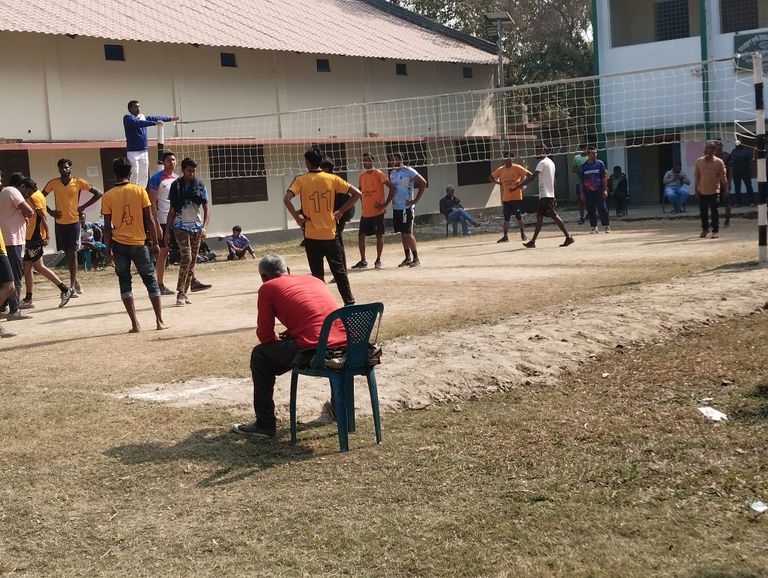
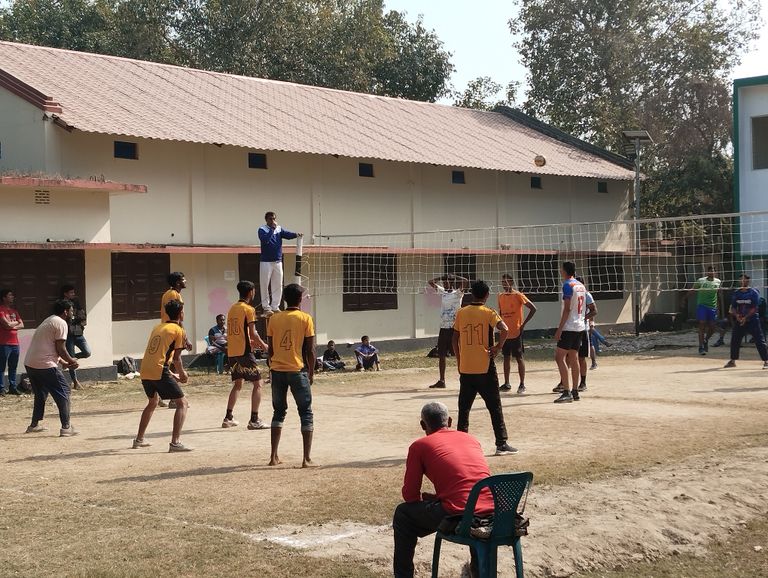
Essential Rules and Guidelines to Follow While Playing Volleyball
Volleyball is a fast-paced and exciting sport that requires teamwork, skill, and strategy. Whether you're playing for fun or in a competitive setting, understanding the essential rules and guidelines of the game is crucial for fair play and success. In this blog, we will explore the fundamental rules, techniques, and etiquette that players should follow while playing volleyball.
- Basic Rules of Volleyball
Volleyball is played between two teams, each consisting of six players. The objective of the game is to send the ball over the net and land it in the opponent’s court while preventing the opposing team from doing the same. Here are the key rules every player should know:
1.1 Court and Team Setup
The volleyball court is 18 meters long and 9 meters wide, divided into two equal halves by a net.
Each team has six players on the court at a time, with three in the front row and three in the back row.
A team can have substitutes who can replace players during the match.
1.2 Scoring System
Volleyball uses a rally scoring system, meaning a team can score a point whether they are serving or receiving.
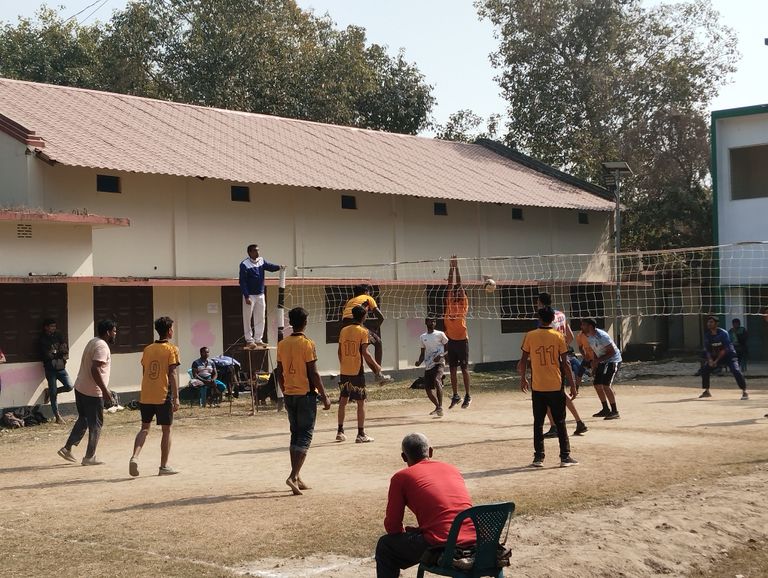
A set is won by the team that scores 25 points with a minimum lead of two points.
The match is played in a best-of-five format, and the final set (if required) is played up to 15 points.
1.3 Serving Rules
The game starts with a serve, where a player hits the ball over the net from behind the baseline.
The server must ensure the ball clears the net and lands inside the opponent's court without stepping on or over the baseline.
If the serve touches the net but still lands in bounds, it is considered legal (known as a "let serve").
1.4 Ball Contact Rules
Each team is allowed a maximum of three touches before returning the ball over the net.
A player cannot hit the ball twice in a row, except in the case of a block followed by a hit.
The ball can be played using any part of the body, but it must be hit cleanly (not caught or thrown).
1.5 Rotations and Positions
Players rotate clockwise every time their team wins the serve from the opposing team.
Back-row players cannot attack from the front row unless they jump from behind the attack line (also called the "three-meter line").
- Essential Skills in Volleyball
To be successful in volleyball, players must develop and master essential skills, including serving, passing, setting, attacking, blocking, and digging.
2.1 Serving
Underhand Serve – A simple serve where the player swings their arm from below.
Overhand Serve – A more advanced serve that allows better control and speed.
Jump Serve – A powerful serve where the player jumps and strikes the ball in mid-air.
2.2 Passing (Bumping)
A defensive skill used to receive serves or hard-driven shots.
Players use their forearms to redirect the ball to the setter.
2.3 Setting
The setter is responsible for positioning the ball for an attacker.
A good set requires finger-tip control and precise ball placement.
2.4 Attacking (Spiking)
A powerful offensive move where a player jumps and strikes the ball forcefully over the net.
Different types of spikes include cross-court spikes, line shots, and tipping.
2.5 Blocking
A defensive technique where front-row players jump to stop or deflect an opponent’s attack.
A successful block can either prevent the ball from crossing or slow it down for defenders.
2.6 Digging
A skill used to prevent the ball from hitting the ground after an opponent’s attack.
Requires quick reflexes and diving techniques.
- Common Violations and Faults
Understanding common volleyball mistakes can help players avoid unnecessary point losses.
3.1 Net Violations
Players cannot touch the net while attempting to play the ball.
A blocker or attacker must not reach over the net before the ball crosses the plane of the net.
3.2 Foot Faults
A server must not step on or over the baseline before making contact with the ball.
Back-row players cannot step inside the attack line when spiking.
3.3 Lifting or Carrying the Ball
The ball must be hit cleanly, not caught, carried, or thrown.
A lift occurs when a player’s contact with the ball is prolonged.
- Teamwork and Communication
Volleyball is a sport that heavily relies on teamwork. Good communication and cooperation among teammates can make a significant difference in performance.
4.1 Calling the Ball
Players must communicate by saying “Mine!” or “Got it!” to avoid confusion.
4.2 Supporting Teammates
Encouraging and motivating teammates can boost morale and enhance overall performance.
4.3 Strategic Positioning
Teams must adjust their defensive and offensive formations based on the opponent’s strategy.
- Volleyball Etiquette and Sportsmanship
Apart from rules and techniques, good sportsmanship is crucial in volleyball.
5.1 Respect for Opponents and Referees
Players should show respect towards referees and accept their decisions.
Opponents should be treated with fairness and respect at all times.
5.2 Encouraging Fair Play
No unnecessary arguing, taunting, or unsportsmanlike behavior should occur.
Teams should always shake hands before and after the match.
5.3 Handling Victory and Defeat Gracefully
Win with humility and lose with dignity.
Always appreciate the efforts of both teams, regardless of the outcome.
Conclusion
Volleyball is a dynamic and exciting sport that requires skill, teamwork, and adherence to rules. By understanding the basic gameplay, essential techniques, common violations, and sportsmanship principles, players can enhance their performance and enjoy the game even more. Whether playing for fun or competitively, following these guidelines will help ensure a smooth and enjoyable volleyball experience. Are you a volleyball enthusiast? Share your favorite volleyball moments in the comments below.
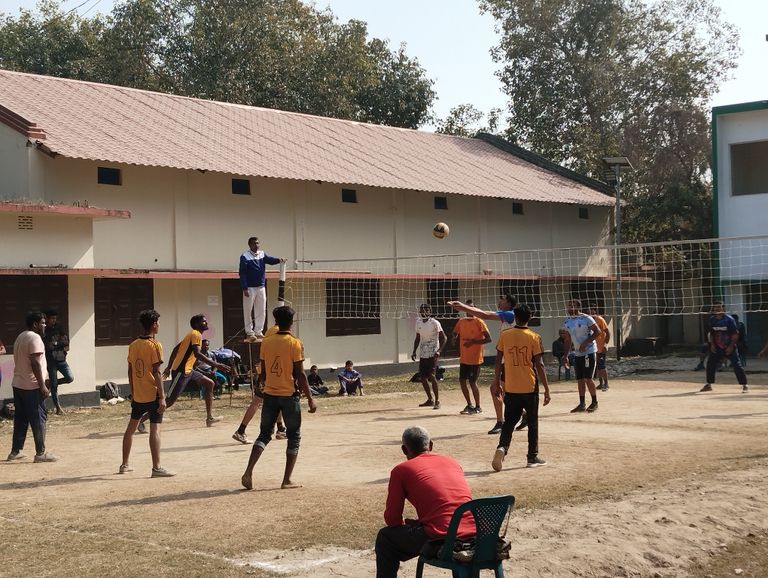
Essential Rules and Guidelines to Follow While Playing Volleyball
Volleyball is a fast-paced and exciting sport that requires teamwork, skill, and strategy. Whether you're playing for fun or in a competitive setting, understanding the essential rules and guidelines of the game is crucial for fair play and success. In this blog, we will explore the fundamental rules, techniques, and etiquette that players should follow while playing volleyball.
- Basic Rules of Volleyball
Volleyball is played between two teams, each consisting of six players. The objective of the game is to send the ball over the net and land it in the opponent’s court while preventing the opposing team from doing the same. Here are the key rules every player should know: